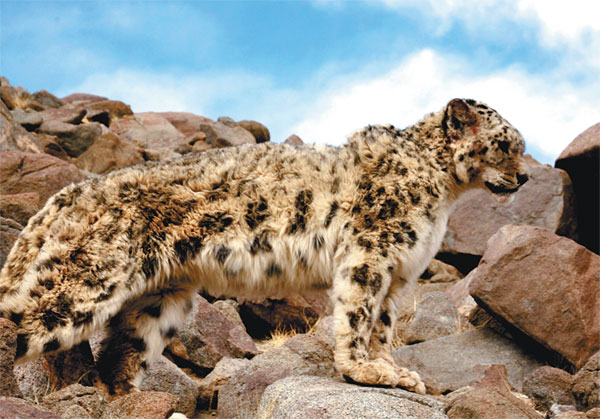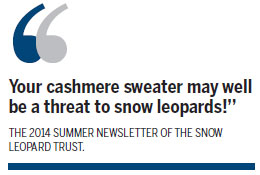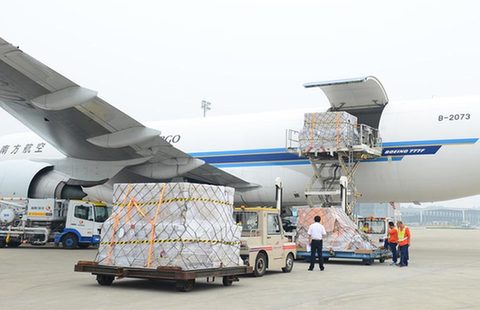Saving the magnificent cat
Updated: 2014-09-12 11:59
By Deng Yu(China Daily USA)
|
||||||||
|
This snow leopard in Ngari prefecture, the Tibet autonomous region, was subdued in April after it attacked a local herdsman's flock of sheep. It was later set free. Snow leopards on the Tibet Plateau are under increasing pressure from human encroachment. China News Service |
Major threat
The major threat to the snow leopard is the increasing human population pressure on the grasslands and pastures of the Tibetan Plateau and the high mountain valleys of Xinjiang
In addition, snow leopards are also at risk from poachers, who can sell their fur for several thousand dollars in large cities of eastern China. Snow leopard bones are also increasingly being used as a replacement for more expensive tiger bone in traditional Chinese medicine, while live snow leopard cubs, often orphaned by poachers, are also captured and sold to circuses and public and private zoos for as much as $20,000 each.
Another threat to snow leopards comes from the demand for cashmere. It is indirectly leading to the killing of the big cats.
"Your cashmere sweater may well be a threat to snow leopards!" said the first paragraph in the 2014 summer newsletter of the Snow Leopard Trust.
Demand for the fiber has skyrocketed globally and farmers are earning good profits from tending herds of cashmere goats. Across Asia, farmers have enlarged their flocks to earn more. The main countries farming cashmere goats are Mongolia, northern India and northern China. Herds in Mongolia alone have grown from 5 million goats in the early 1990s to 14 million in 2010, according to researchers.
But the goats have a predator - the snow leopard. The herds are moving into the uplands that are home to the snow leopards, and farmers are killing the cats to protect their herds. Farmers also are driving away or killing the cats' natural prey - such as antelope, deer and wild sheep - to make way for the goats. And that in turn is causing snow leopards to go after the cashmere goats.
"Farming cashmere is a complex matter," Charudutt Mishra of the Snow Leopard Trust said in the newsletter. "The farmers want to earn more money to improve their lives, but their gain is at a cost to the snow leopard. They need to understand the problem and everyone needs to adapt farming policies to accommodate endangered species while working to support the financial needs of the farmers and their communities."
Mishra said, "You don't change an industry overnight. Establishing sustainable cashmere production standards and building a brand that can bring such a product to market will take several years."
He said the trust wants to work with cashmere farmers and select buyers to set up a program that would encourage more sustainable grazing practices and conservation commitments from the farmers "to produce Snow Leopard-Friendly Cashmere, a label which can, in turn, fetch premium prices for both the herders and the industry."
Most Viewed
Editor's Picks

|

|

|

|

|

|
Today's Top News
Xi calls for economic corridor with Russia and Mongolia
Paulson, Rudd tackle China's future
VW and Chrysler hit with fines for price-fix
Exhibit recounts Shanghai's Jewish refugees in WWII
VW, Chrysler fined for price-fixing
South African judge clears Pistorius of murder
Xi, Putin meet ahead of SCO summit
Obama: Joint force vs ISIS
US Weekly

|

|


















